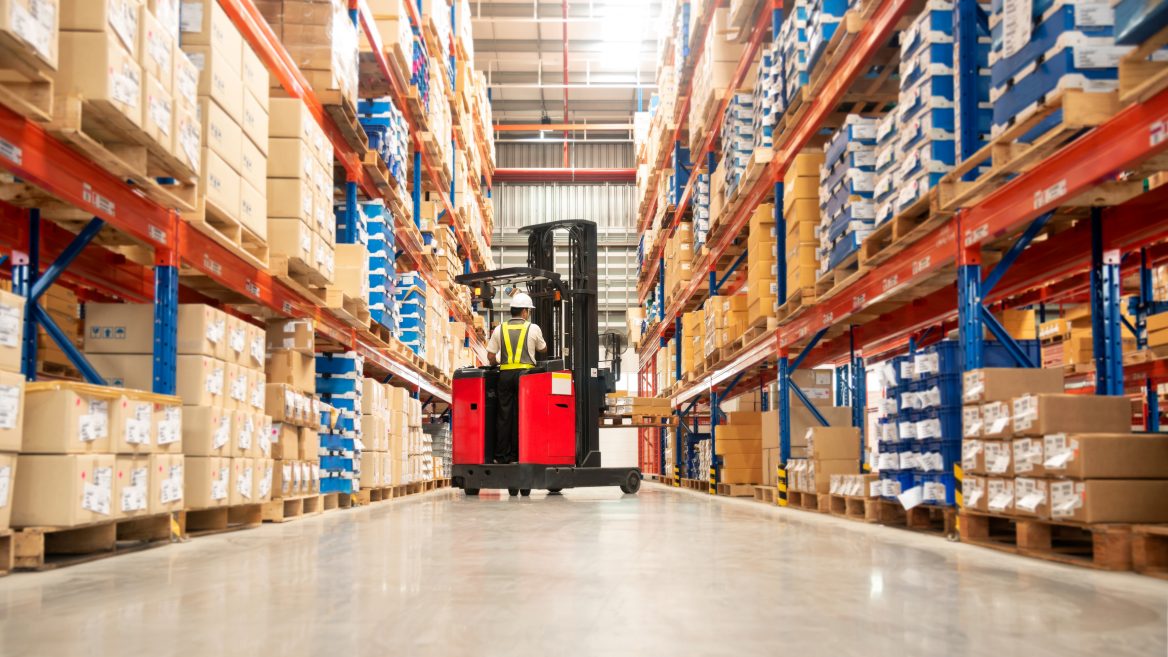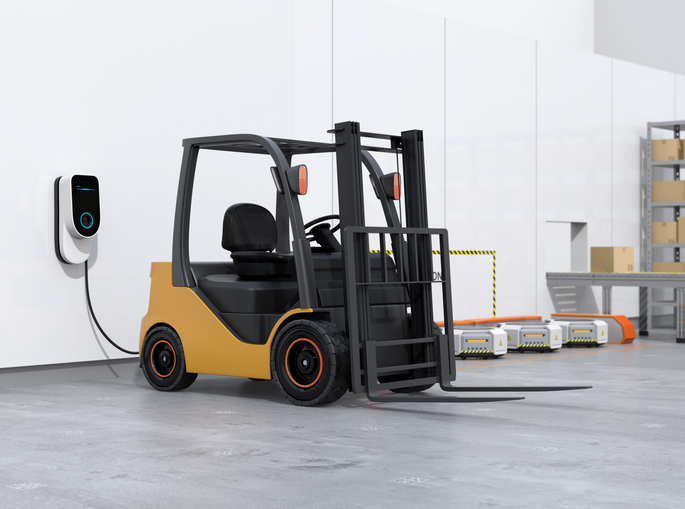It’s essential to look for signs that it’s time to upgrade your warehouse and make the necessary modifications as they arise. The cost to rent or own warehouses in the United States is increasing exponentially, with rates for commercial property rentals 25% higher than the five-year contracts that expired in 2021. Acquiring warehouse space and budgeting for the upgrades is steep, including labor, equipment and maintenance costs. Many companies put repairs and advanced solutions on the backburner as a result. However, ignoring pivotal upgrades puts warehouse operations at risk. Additionally, tenants are interested in a facility that best meets their needs for optimal efficiency. That’s why it’s essential to look for signs that it’s time to upgrade your warehouse and make the necessary modifications as they arise.
Download Printable Article (PDF) >>>

When to Upgrade Your Warehouse
Warehouse management is complex, especially when product demand is high. Operations managers must be vigilant about stock-flow efficiency, inventory, a conducive layout and the safety of all workers on the floor. Several approaches can be taken to ensure systems and safety practices are current, but deciding what upgrades are best for your warehouse requires awareness of its problems. Common telltale signs that your warehouse needs an upgrade include the following:
- Your warehouse requires constant repairs and maintenance.
- Tracking stock and maintaining inventory management is inadequate.
- The current layout slows productivity.
- Your docking system is unorganized.
- Warehouse technologies are outdated.
- Safety standards need revisions.
Should you be alerted to any of these indicators, you’ll want to consider how you can make the necessary updates and enhance tenant desirability.
6 Ways to Upgrade Your Warehouse
Streamlining your business processes and repairing damage will keep you ahead of the game and save you time and money, even if your warehouse runs smoothly. Here are six ways you might consider upgrading your warehouse.
1. Optimize Warehouse Management System
An insufficient warehouse management system makes it difficult to search for products, track movements and maintain accurate stock levels. Customer orders go unfilled if warehouse employees are unsure where to find stock.
As time goes on, these inefficiencies prolong deliveries and increase customer dissatisfaction. It may also lead to excess stock and decreased outputs. Imagine how your tenants feel when customers begin inquiring in
droves about missing packages.
Optimizing your warehouse management software enables operations managers to take control of stock levels and prepare for increasing inventory demand. The latest programs also help reduce human error and
improve the cataloging of stored products.
You might also consider automating your warehouse with an automated storage and retrieval system (ASRS). An ASRS device employs advanced digital-control methods and equipment to store, retrieve and transport
loads. For example, a vertical lift module (VLM) can boost productivity by 67% and save nearly 85% of floor space by reducing how long it takes to walk to and search for a product. Upgrade your warehouse management tools to help ensure inventory is accurate and orders are fulfilled on time. It will also reduce your tenants’ worries over their bottom lines.
2. Prioritize Cleanliness and Safety
Cleaning your warehouse may not be the upgrade you were expecting. However, a tidy space makes a tremendous difference in organization and workplace safety.
According to a recent Strategic Organizing Center (SOC) study, 6.8 of 100 Amazon warehouse workers sustained serious injuries in 2021 — twice the rate of other warehousing companies and distribution centers
in the U.S. Amazon was also accountable for 49% of all warehouse-related injuries that year. Warehouse operations managers must prioritize workplace cleanliness and safety for their employees. They should generate a comprehensive checklist for janitorial staff and employees to improve cleanliness while keeping aisles clear for lifts and vehicle traffic.
Suppose your warehouse hasn’t had an inspection in a long time. Scheduling one will make you aware of safety hazards, structural damage, or potential leaks that need addressing or repairing.
For example, adding a sloped metal roof will prevent leaks and improve your facility’s durability. It also reduces the risk of paying tenants exorbitant amounts of money for lost or damaged inventory.
3. Upgrade Your Warehouse to Utilize Fast-Change Technology
Forklifts typically run on batteries with a relatively short operating life. That means it takes a long time to recharge them for multiple shifts. Many warehouses have to invest in additional batteries for each forklift, necessitating extra time in operators’ schedules to transport the equipment to a changing station.
However, new battery technology aims to improve forklift reliability. Lithium-ion batteries are fast-charging, requiring only two to three hours for a full charge with an expectancy of 3,500 charging cycles. Additionally, their sealant ensures minimal maintenance, such as watering or cleaning, is needed.
Warehouses that use fast-charge technology for their equipment save money by not paying for extra forklift batteries — meaning tenants won’t endure occasional price increases. Workflow also remains consistent as battery-changing time no longer interrupts the day.

4. Reorganize Your Layout
Warehouses and distribution centers experienced increased order and stock-flow volume throughout the COVID-19 pandemic, forcing businesses to alter their systems dramatically. The demand highlighted the need to reevaluate whether floor plans were efficient.
Warehouse operations managers should review their current layout regularly by asking themselves the following questions:
- Do too many steps on the floor negatively impact productivity?
- Are employees safe in the current design?
- Are the warehouse ventilation and lighting satisfactory?
- Is horizontal and vertical space usage maximized as much as possible?
Improving your layout may entail redesigning your shelving with single-operator-picking cranes or a mezzanine — conveyor platforms, catwalks, crossovers — to utilize more vertical space.
5. Systemize Docking
Tenants want a warehouse with excellent organization and operational performance. Facility operations that slow down due to dock issues could cost you money and productivity. Unorganized scheduling, slow loading and unloading, manual updates to inventory, and increased risk for injuries impact your warehouse’s docking capabilities.
Warehouses should install dock scheduling software for improved management. This makes booking appointments more effortless and can even be integrated with your warehouse management system. Another upgrade for your docking stations may include altering the area for more load space. Remember that inbound stock needs ample room — otherwise, loading inventory into tight spaces can lead to damaged goods, lost profits and severe harm to workers.
The last thing you want is an employee or driver to get hurt in your facility’s docking station. Likewise, tenants will think twice about using your warehouse if your establishment has a reputation for ruining inventory.
The dock is a great place to invest time and money into upgrades.
6. LED Lighting
Your warehouse needs adequate lighting, but the overall costs to keep the lights on year-round are exorbitant. A minor upgrade you may want to implement could be installing light-emitting diodes (LEDs). The life expectancy of LEDs also supersedes traditional bulbs, producing nearly 100,000 operating hours and lasting anywhere from 10 to 25 years. They also require very little maintenance and will be an excellent
long-term investment for your warehouse.
Swapping out your warehouse’s lightbulbs for energy-efficient LEDs isn’t going to optimize your business processes. However, it will help cut the cost to power your facility, improve power efficiency and shine
brighter than your current bulbs.
You Shouldn’t Wait to Upgrade Your Warehouse
The best thing you can do for your employees and tenants is stay ahead of potential hazards. Making changes, whether it’s to the facility’s structure, technologies, equipment or processes, goes a long way and
will prove beneficial for your warehouse in the long run.
Rose Morrison is a residential and commercial real estate writer and the managing editor of Renovated. To see more of her work visit: https://renovated.com/


